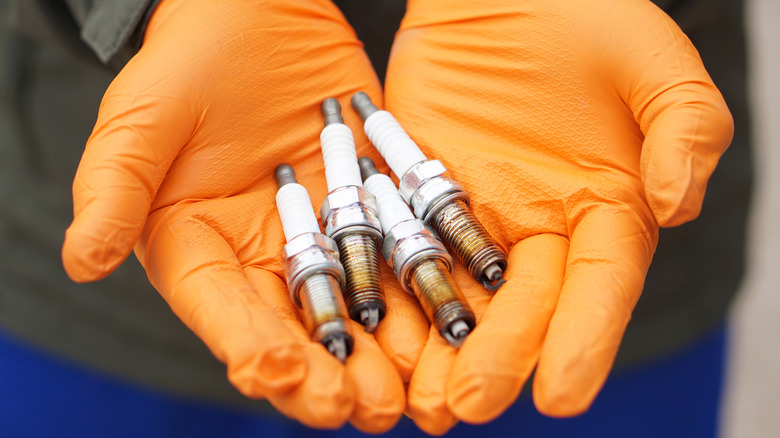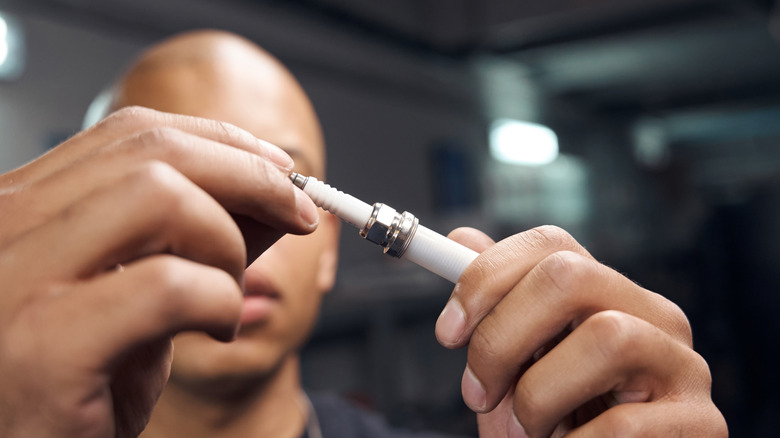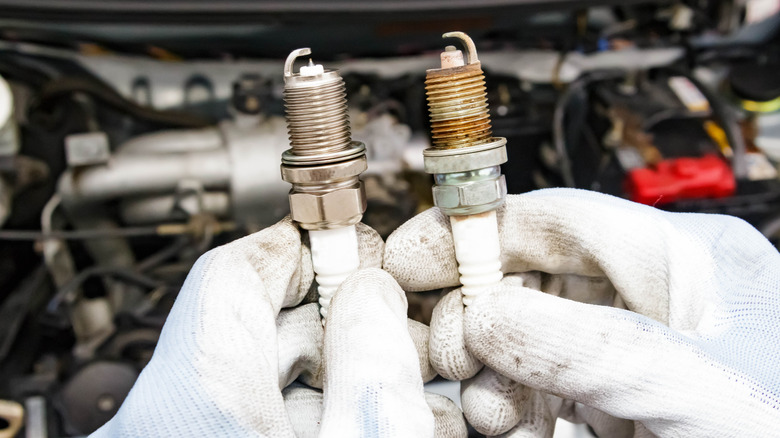
There's something oddly satisfying about pulling an old spark plug out of an engine, but what do you do with the plug once it's out? Maybe you're having second thoughts about changing the spark plug altogether. It's covered in carbon, sure, and maybe a little oil or rust if things have gone really wrong. Still, you can't help but think, "Hmm -- maybe it's not done yet."
Logically, yes, you can clean and reuse a spark plug but it depends on how far gone it is. A little carbon fouling or dry soot? That
can be gently wire-brushed off. Some people in forums swear by blasting them clean with carb cleaner and giving the electrode a light touch-up with sandpaper. Others go full mad scientist and use plug-specific media blasters like sand, to get them back to like-new condition.
However, spark plugs don't just wear out on the surface. The sharp edges of the electrode erode. The gap widens. The insulator degrades from heat cycling. So while you can clean them up, what you're doing is a temporary fix at best. You simply won't get the same function from the cleaned plug versus a new one. It might be okay for testing or nursing an old car through one more season, but reusing a borderline plug in a high-compression engine or modern ignition system? Probably not worth the risk.
Read more: These V6 Engines Put The LS1 V8 To Shame
The Spark Plug Gamble — Reuse Or Regret?

Old motorcycle? Lawn mower that hasn't seen synthetic oil in decades? Sure, clean the plug and put it back in. In low-demand engines or diagnostic situations, a reused spark plug can be perfectly acceptable. Just don't expect miracles. You're just delaying the inevitable.
In modern cars -- especially those with coil-on-plug ignition, direct injection, and turbochargers -- spark plugs need to be perfect. These engines demand precision timing, and even a slightly worn or fouled plug can lead to misfires, rough idle, and poor fuel economy. On turbocharged direct injection engines, low-speed pre-ignition (LSPI) is a real threat -- this is when combustion starts before the spark plug fires, it creates extreme pressure and heat that can destroy pistons in seconds. Researchers have documented LSPI extensively, noting its connection to spark plug and combustion chamber design in boosted direct injection engines.
Suddenly, that $10 savings doesn't look so smart. Cleaning old plugs with abrasives or harsh tools can also damage the firing end and strip away critical coatings, which are part of what make newer iridium and platinum plugs last so long. A plug might look fine to the naked eye, but once that coating is compromised, its reliability drops fast.
If you're just diagnosing an issue or stranded and trying to get home, reuse it. If you're doing a tune-up? Just replace the spark plugs. Most standard plugs are cheaper than your next tank of gas.
Should You Clean Or Just Replace?

Spark plugs remain a cheap yet critical maintenance item on a car. So, yes, cleaning can revive a plug for a bit, but it's rarely a reliable long-term strategy. Manufacturers explicitly recommend replacement over cleaning to ensure consistent engine performance. While copper spark plugs might only last up to 30,000 miles, platinum spark plugs could go up to 60,000 and iridium plugs can stretch up to 100,000 miles. Ultimately, the occasional spark plug replacement is a small price to pay for peace of mind.
While forums and anecdotal advice provide plenty of techniques for cleaning spark plugs -- from brushing to blasting -- even most DIY mechanics agree that they are best used as backups. They might get your engine to turn over in a pinch, but they're not the kind of part you'd want in your daily driver when you're chasing reliability.
So yes, you can clean and reuse old spark plugs. However, unless your goal is just to get the car running one more time to take it to the scrapyard, buying new ones is the better bet. Don't treat them like reusable zip ties. The price of a fresh set is already low. The cost of dealing with misfires, rough idles, and declining fuel economy? That gets expensive real fast.
Want more like this? Join the Jalopnik newsletter to get the latest auto news sent straight to your inbox...
Read the original article on Jalopnik.











